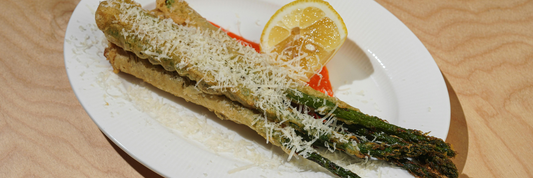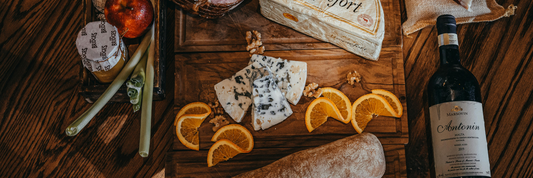Have you heard of the popular non-woven reusable bags used at many supermarkets? Consider woven bags. What distinguishes them from one another? How can you pick the ideal bag for your business's use? Check out the article from today.
Essential Understanding Woven vs Non-Woven Bags
What Is Woven Bag?
A woven bag is a type of bag that is made by interlacing strips of material, such as fabric, straw, or plastic, in an over-under pattern. This creates a strong and flexible fabric that can be used for various purposes. Common types of woven bags are tote bag, sling bags, clutches, basket bags or grocery bags. They are reusable and recyclable.
What Is Non-Woven Bag?
Non-woven bags are made from a sheet of material formed by bonding fibers together through heat, pressure, or chemical adhesives, without any weaving involved.
Non-woven bags are one of reusable type of bag. They are used commonly used as shopping bags, medical and hygiene bags, coffee bags.
What Is the Difference Between Woven Bag and Non-Woven Bags?
The Difference Between Materials and characteristics
The difference between woven bag and non-woven bags lie in their manufacturing process, material properties and characteristics. Here is the breakdown of each of them.
- Woven Bags: made by interlacing threads or strips of materials, creating a fabric with a weave pattern.
- Non-woven Bags: made by bonding fibers together though heat, pressures, or chemical adhesives. Resulting in a sheet-like material without an actual weave.
Due to the difference between manufacturing process, woven and non-woven bags have their own feature, showing as follow:
Woven bags: durable and strong due to interlaced structure. This type of material is breathable preventing moisture build-up.
Non-woven bags: due to the structure, this type of bag is lightweight and thin, denser that can trap moisture. They also offer better water resistance than woven fabric.
Difference Between Their Practicalities
The different characteristics above lead to numerous differences of applications and practicality for business including: cost, customizability, durability, purpose, eco-friendliness, and aesthetic.
Cost:
- Woven bags: Higher initial cost due to their durable materials and complex manufacturing process. However, they offer long-term value for money as they can last for years and be used repeatedly. Think of it as an investment.
- Non-woven bags: Lower cost due to simpler production and synthetic materials. They're ideal for short-term needs like disposable shopping or promotional use. Consider them a budget-friendly option for specific purposes.
Customizability
- Non-woven bags: Highly customizable with diverse printing options.
- Woven bags: Limited customization options due to the weaving process which is dependent on the material used.
Durability
- Woven bags: Highly durable and long-lasting. They can withstand heavy loads and frequent use, making them ideal for everyday carrying and long-term purposes.
- Non-woven bags: Less durable and prone to tearing or wearing out faster. They're intended for single or limited use and may not handle heavy loads well.
Purpose
- Woven bags: This type of bag can be a excellent choice for who is aiming to sustainability and looking for a bag for various purpose like shopping, carrying, traveling, or even fashion accessories.
- Non-woven bags: Because it’s leightweigh, it’s suitable for pecific purposes like disposable shopping bags, promotional giveaways, medical packaging, or hygiene applications.
Eco-friendliness
Woven bags often made from natural materials are more eco-friendly than synthetic non-woven bags.
Aesthetic
Woven bags often have a more natural and appealing look compared to non-woven bags.
Advantage and Disadvantages of Woven vs Non-Woven Bags
Form the difference above, we can see that each type of bags that offer their own pros and cons for business. If your business is still considering, following is a breakdown to summarize their pros and cons:
Woven Bags
Pros:
- Durability: Stand up to heavy loads and frequent use, ideal for long-term customer use or employee essentials.
- Versatility: Available in various sizes, shapes, and materials for diverse applications, from shopping totes to laptop sleeves.
- Eco-friendliness: Many made from natural materials like cotton or jute, promoting sustainability and aligning with eco-conscious branding.
- Customizability: Offer excellent printing and branding options for logos, messages, or unique designs, boosting brand recognition.
- Perceived value: Customers often perceive woven bags as higher quality and more premium, potentially improving brand image.
Cons:
- Cost: Generally, more expensive than non-woven bags due to material and construction.
- Weight: Can be heavier than non-woven options, impacting shipping costs and customer convenience.
- Washability: Not all materials are easily washable, potentially limiting some uses.
Non-woven bags
Pros:
- Cost-effective: Affordable option for short-term uses or promotional giveaways.
- Lightweight: Easy to distribute and carry, reducing shipping costs and enhancing customer convenience.
- Water resistance: Some non-woven materials offer water resistance, ideal for specific applications.
Cons:
- Durability: Generally less durable than woven bags, prone to tearing or wearing out faster.
- Limited versatility: Often designed for specific purposes, limiting their long-term use.
- Less eco-friendly: Primarily made from synthetic materials, raising sustainability concerns.

Should Your Business Choose Woven or Non-Woven Bags?
Both woven and non-woven bags can benefit various businesses, but the ideal type depends on the specific industry, products, and marketing goals. Here's a breakdown:
Woven Bags are a good fit for:
- Retail: Grocery stores, clothing stores, and other retailers can use woven bags for shopping totes, gift bags, or product packaging. Their durability and versatility make them ideal for repeated use by customers, boosting brand awareness and customer satisfaction.
- Eco-conscious brands: Businesses focused on sustainability can leverage woven bags made from natural materials like cotton or jute. This aligns with their values and resonates with environmentally conscious customers.
- High-end brands: Woven bags with premium materials and branding can elevate a brand image and enhance perceived value, ideal for luxury or artisanal products.
- Promotional uses: Trade shows, conferences, and other events can utilize woven bags as giveaways or merchandise. Their sturdiness and customization potential make them effective for brand promotion.
- Businesses seeking long-term customer use: Companies providing products requiring carrying or protection, like electronics or outdoor gear, can benefit from offering durable woven bags for customer convenience and brand loyalty.
Non-woven bags are better suited for:
- Budget-conscious businesses: Non-woven bags offer an affordable option for promotional giveaways, event merchandise, or short-term packaging needs.
- Businesses with disposable product packaging: Industries like food delivery or medical supplies can utilize non-woven bags for single-use packaging due to their cost-effectiveness and convenience.
- Businesses targeting specific demographics: Non-woven bags can be customized with vibrant colors and designs, appealing to younger audiences or specific event themes.
- Temporary or seasonal promotions: Non-woven bags are ideal for short-term campaigns or limited-edition products due to their lower cost and quick production turnaround.
- Businesses requiring water resistance: Some non-woven materials offer water-resistant properties, making them suitable for packaging products that need protection from moisture.
Frequent Asked Questions
Are non-woven bags good or bad?
Non-wovan bags are generally not bad, but less durable and eco-friendly than woven bags. Good for short-term use and specific purposes.
Woven vs non-woven: What is the best material for grow bags?
Depends on your needs. Woven bags offer breathability and drainage, while non-woven can retain moisture better. Consider plant type and climate.
Is Non-Woven Bag Eco-friendly?
Primarily made from synthetic materials, but some options use recycled materials. Prefer woven bags for eco-friendliness.
Are Non-Woven Bags Strong?
Non-woven bags can tear or wear easily compared to woven bags. Suitable for lightweight items and short-term use.
Put in brief, woven vs non-woven bags have their own properties and can be used for a variety of purpose. The right option for your business depends on your purposes, target audience and budget strategies also. At Kimecopak, we provide different choices of reusable bags including non-woven bags. Furthermore, we offer also exclusive offers for our long-term partner including fixed-price in 6 months, storage solution, scheduled shipping, and discount. For more information, please contact us via email halo@kimecopak.ca or Kimecopak Facebook Fanpage.




